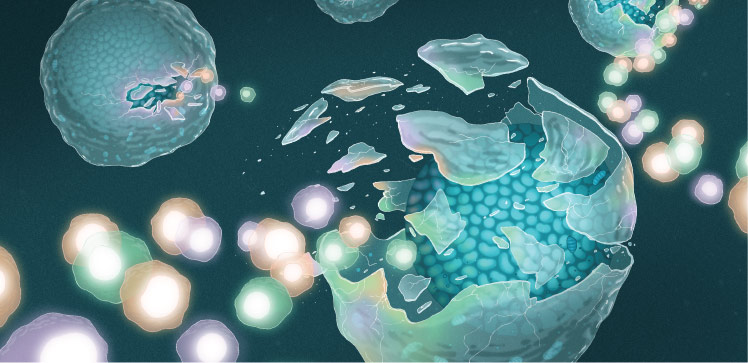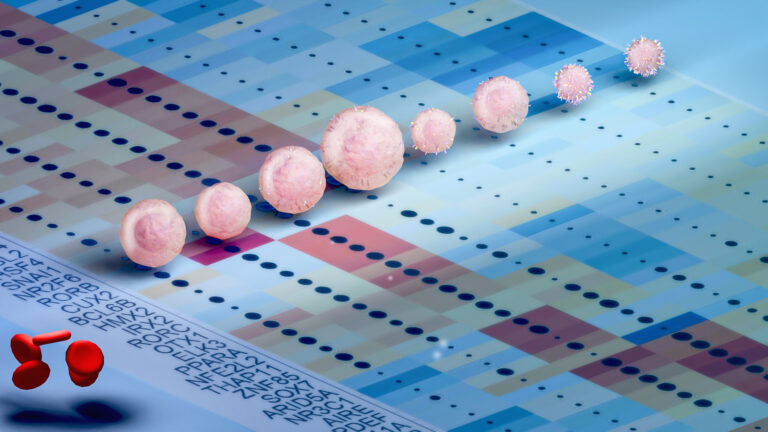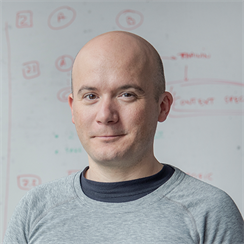Bioscience
Cell mapping close to the bone
Deep molecular analysis of the bone marrow microenvironment reveals that the cells regulating blood stem cell maintenance are more diverse than expected and have features likely to be conserved between species.

Tissues contain many different cell types, and it remains challenging to understand how they interact and contribute to tissue function. Now, state-of-the-art bioinformatics has enabled an international research team to uncover the complexity and high degree of conservation of the bone marrow microenvironment that regulates blood stem cells.
Blood stem cells can self-renew — thereby retaining their stemness — as well as differentiate, giving rise to all cell types in the blood, including white blood cells, red blood cells and platelets. The bone marrow microenvironment or “niche,” where blood stem cells reside, is essential for regulating blood stem cell self-renewal and differentiation. Yet, little is known about the cellular composition of the niche and the diverse functions of its constituents.
“We don’t yet understand the composition of the bone marrow niche and how it integrates local and systemic inputs to regulate hematopoiesis,” says David Gomez-Cabrero, a bioinformatician and computational biologist at KAUST. Gomez-Cabrero has been developing new methods to combine single-cell sequencing datasets to improve understanding of cellular identity and function. Single-cell technologies enable researchers to accurately profile the genes, proteins and metabolites in individual cells.
Gomez-Cabrero, working with Spanish researchers at Clinica Universitaria de Navarra and the Center for Applied Medical Research, has carried out an integrative analysis of three distinct mouse bone marrow niche datasets, focusing on two cell types that are involved in blood stem cell maintenance: endothelial and mesenchymal stromal cells.
The study describes how, by integrating single-cell gene expression data (single-cell RNA sequencing) for each of these cell types, the authors were able to unravel the heterogeneity of these niche cells, identifying multiple cellular subtypes and molecular states. Each subtype is defined by the expression of a particular set of genes, which provides clues about the cells’ function and stage of differentiation. In total, they characterized 14 endothelial subclusters and 11 mesenchymal subclusters. “We have uncovered a previously unrecognized level of heterogeneity and specialization of endothelial and mesenchymal cells in the bone marrow,” says co-author Jesper Tegner, professor of computational biology and machine learning.
When the results in mice were compared with those from human bone marrow samples, some of the subcluster gene signatures and known niche factors regulating hematopoiesis were conserved. This suggests that the biological mechanisms defining the bone marrow microenvironment are likely to be shared between species, explains Gomez-Cabrero.
To further understand the composition and regulation of cells in the bone marrow microenvironment and their interactions, Gomez-Cabrero and researchers Borja Saez and Felipe Prosper will continue to integrate other data modalities, such as epigenetics, proteomics and imaging data, into their analyses. “Once all the cell types have been characterized, cell-cell interactions can be better defined,” he says.
References
-
Ye, J., Calvo, I.A., Cenzano, I., Vilas, A., Martinez-de-Morentin, X., Lasaga, M., Alignani, D., Paiva, B., Viñado, A.C., San Martin-Uriz, P., Romero, J.P., Quilez Agreda, D., Miñana Barrios, M., Sancho-González, I., Todisco, G., Malcovati, L., Planell, N., Saez, B.,Tegner, J.N.,Prosper, F. & Gomez-Cabrero, D. Deconvolution of the hematopoietic stem cell microenvironment reveals a high degree of specialization and conservation. iScience 25, 104225 (2022).| article
You might also like

Bioscience
Cell atlas offers clues to how childhood leukemia takes hold

Bioscience
Hidden flexibility in plant communication revealed

Bioscience
Harnessing the unintended epigenetic side effects of genome editing

Bioscience
Mica enables simpler, sharper, and deeper single-particle tracking

Bioengineering
Cancer’s hidden sugar code opens diagnostic opportunities

Bioscience
AI speeds up human embryo model research

Bioscience
Sex chromosome overload sparks to a common developmental faultline

Bioscience




